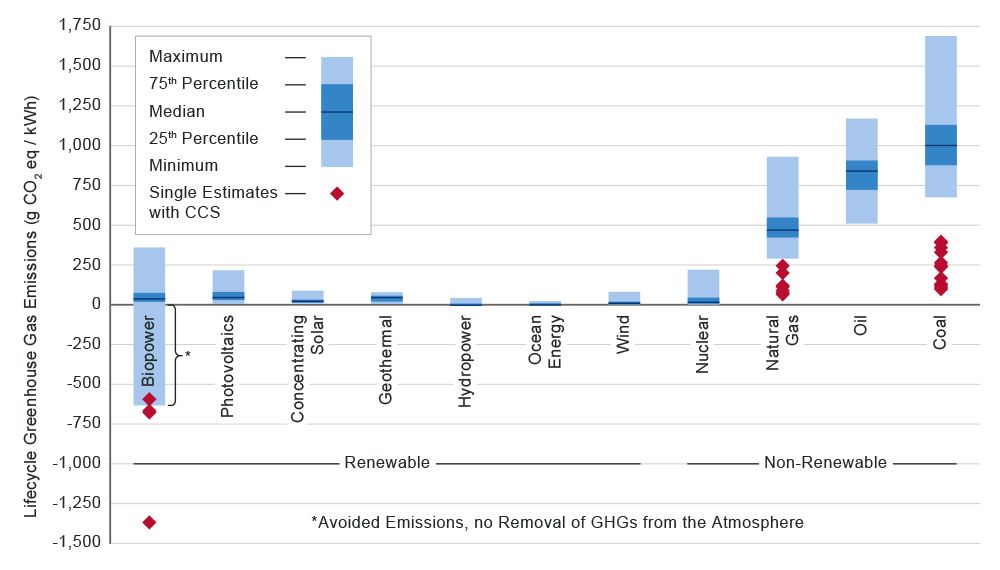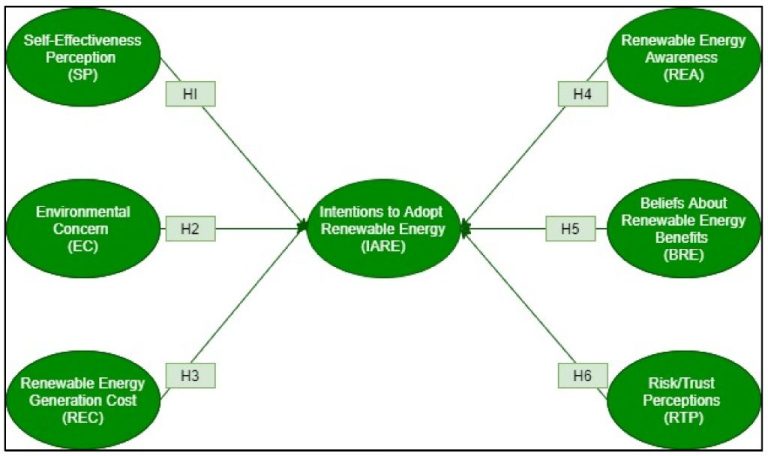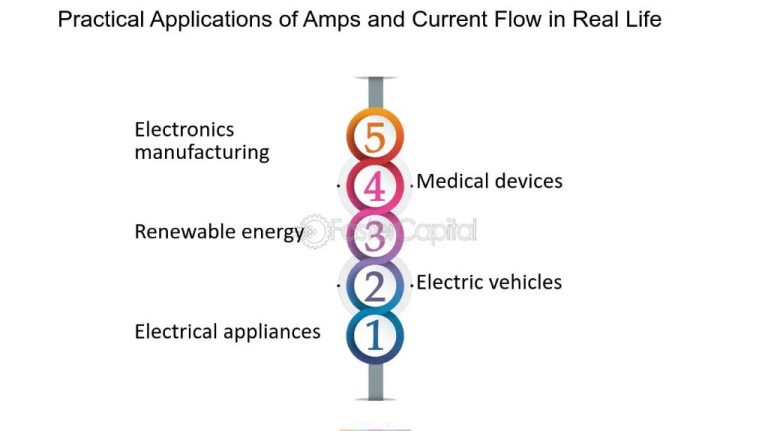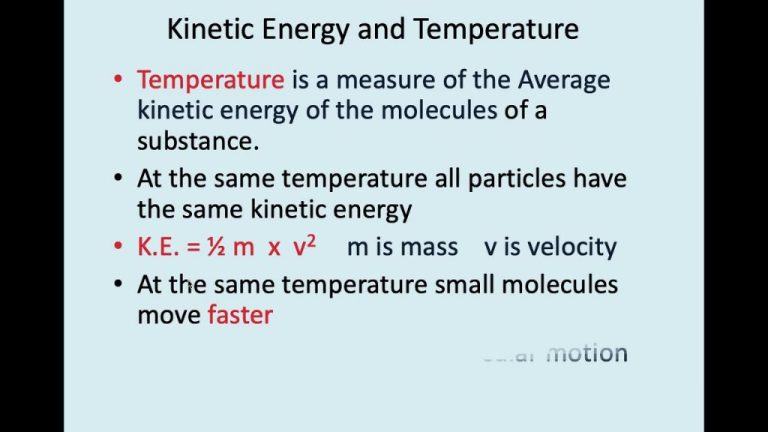Does Renewable Energy Release Less Carbon Dioxide Into Out Atmosphere?
The global electricity sector accounts for over 30% of total carbon dioxide emissions, making the shift to renewable energy critical for reducing greenhouse gas emissions and mitigating climate change (source). Many renewable energy technologies like wind, solar, hydro and geothermal produce little to no carbon emissions during operation, leading some to assume they offer dramatic emissions reductions versus fossil fuel power. However, the actual carbon footprint of different renewable technologies can vary based on factors like construction impacts, capacity factors, backup needs and more. This article will analyze lifecycle emissions from major renewable sources to assess their carbon reduction potential compared to fossil fuels.
Types of Renewable Energy
There are several major types of renewable energy sources that are in use today:
- Solar energy – This comes directly from sunlight and is captured through solar panels to generate electricity or heat water. Solar is one of the fastest growing renewable energy sources (EIA).
- Wind energy – The motion of wind turns large wind turbines to generate electricity. Wind power capacity has expanded significantly in recent years (EIA).
- Geothermal energy – This taps heat from under the earth’s surface to generate electricity or for direct heating purposes. It provides constant baseload power (DOE).
- Hydroelectric power – Flowing water spins turbines connected to generators to produce electricity. It is a mature renewable technology providing reliable power (EIA).
- Biomass – Plant materials and animal waste can be used to generate electricity, produce heat, or make biofuels. It is a versatile energy source (EIA).
Carbon Emissions from Fossil Fuels
The combustion of fossil fuels like coal, oil, and natural gas produce significant greenhouse gas emissions and are major contributors to climate change. In 2021, fossil fuel emissions accounted for approximately 75% of total global greenhouse gas emissions. The three main sources of carbon emissions from fossil fuels are:
Coal
Coal combustion accounted for over 40% of global CO2 emissions from fossil fuels, generating over 13 billion metric tons of CO2 emissions in 2021. Coal is the most carbon intensive fossil fuel, releasing approximately 2.21 pounds of CO2 per kilowatt hour of electricity generated from a typical coal plant (Source 1).
Oil
The burning of petroleum fuels like gasoline, diesel, and jet fuel accounted for over 33% of global CO2 emissions from fossil fuels in 2021. Transportation is the major source of CO2 emissions from petroleum. On a per-unit of energy basis, oil emits around 1.9 pounds of CO2 per kilowatt hour (Source 2).
Natural Gas
The combustion of natural gas generated around 7 billion metric tons of CO2 emissions globally in 2021, accounting for about 22% of total CO2 emissions from fossil fuels. Natural gas emits the least CO2 per unit of energy of the fossil fuels, releasing around 1.2 pounds of CO2 per kilowatt hour.
Lifecycle Emissions Analysis
When evaluating the emissions from energy sources, it’s important to consider the full lifecycle emissions, not just the emissions from operation. Lifecycle emissions analyses account for the emissions from materials extraction, manufacturing, construction, operation, and decommissioning of energy generation systems.
Several lifecycle analyses have found that renewable energy sources like wind, solar, and hydropower have significantly lower lifecycle greenhouse gas emissions compared to fossil fuels. According to a lifecycle analysis from the National Renewable Energy Lab, the median lifecycle emissions from renewable sources like wind, solar, geothermal and hydropower range from 4-46 gCO2e/kWh. In comparison, the median lifecycle emissions from natural gas combined cycle plants is 490 gCO2e/kWh.

The emissions from renewable energy sources come primarily from the raw materials extraction, manufacturing, and construction phases. The operation phase emissions are negligible for technologies like solar and wind. With careful siting and design, even hydropower projects can achieve low lifecycle emissions.
Overall, the evidence clearly shows that considering total lifecycle emissions, renewable energy technologies release substantially less greenhouse gases than fossil fuel power plants.
Intermittency Challenges
One of the main drawbacks of renewable energy sources like wind and solar is that they can be intermittent, meaning they do not generate power consistently over time https://energyx.com/resources/what-is-intermittency-in-renewable-energy/. The wind doesn’t always blow and the sun doesn’t always shine. This lack of reliability can cause problems for power grid operators.
When renewable sources are not generating electricity, backup power sources like natural gas or battery storage may need to fill in the gaps. This means renewables may still rely indirectly on fossil fuel power at times. One analysis found the intermittency of solar power can actually increase carbon dioxide emissions if not properly managed https://www.journals.uchicago.edu/doi/10.1086/686733.
Solutions for managing intermittency include developing larger interconnected power grids, improving energy storage technology, and having backup power sources available. But overall, the intermittent nature of renewables poses grid integration challenges that don’t exist for consistent baseload power like nuclear or natural gas.
Emissions from Biomass
The carbon neutrality of biomass energy has been debated, with some arguing that biomass emits as much or more CO2 as fossil fuels. When biomass such as wood is burned for energy, it releases the CO2 that the plants absorbed during growth. This theoretically makes it carbon-neutral, since the next generation of plants grown for biomass will re-absorb the CO2. However, some argue that burning biomass emits CO2 immediately while new plant growth takes time, so biomass is not carbon-neutral in the short term (The Guardian). There are also concerns that not all biomass comes from dedicated energy crops, with some sourced from whole trees and forestry residues that may not regrow as quickly. More research is needed to fully understand biomass carbon accounting.
Hydroelectric Emissions
Hydroelectric power has long been considered a clean and renewable energy source because it does not burn any fossil fuels to generate electricity. However, recent research indicates that hydroelectric dams contribute significant amounts of greenhouse gases, specifically methane, to the atmosphere.[1]
Methane is emitted from the surfaces of reservoirs behind hydroelectric dams as organic material decomposes underwater. Reservoirs can contain large amounts of flooded biomass from vegetation and soil, which breaks down into methane due to the lack of oxygen underwater. Methane has a global warming potential 25 times greater than carbon dioxide over a 100-year period.[2]
One study estimates that methane emissions from reservoirs account for 1.3% of total human-caused climate change, comparable to the global warming impact from biomass burning or aviation.[3] However, methane emissions vary widely depending on the location and design of hydroelectric dams. Tropical regions and shallow reservoirs tend to have higher methane emissions than dams in other climates. Overall, hydroelectricity has a smaller carbon footprint than fossil fuel energy sources, but methane emissions should be considered when evaluating dams.
Geothermal Emissions
Geothermal power plants utilize heat from the earth’s core to generate electricity. This heat is extracted through wells drilled into underground reservoirs and used to spin turbines to produce power. Geothermal energy is considered a renewable and sustainable energy source because the heat emanating from the earth’s core is constantly being replenished.
However, geothermal plants can release some emissions, primarily carbon dioxide (CO2) and methane. According to the U.S. Department of Energy, binary-cycle geothermal plants, which operate in a closed loop system, release near zero emissions1. Flash steam plants, which use geothermal fluids, release more emissions but still less than conventional fossil fuel plants. The CO2 and methane emissions result from:
- Non-condensable gases present in geothermal reservoirs that get released into the atmosphere
- Combustion of auxiliary fuels used at the geothermal plant
- Fugitive emissions through equipment leaks and venting
According to the U.S. Energy Information Administration, geothermal plants emit on average 122 pounds of CO2 per megawatt hour of electricity generated, compared to over 2,000 pounds for coal and natural gas plants2. Proper maintenance and emissions controls at geothermal plants can minimize releases. Overall, geothermal energy generates very low emissions compared to fossil fuels.
Regional Differences
CO2 emissions from energy generation vary significantly by region, depending largely on the energy mix used. Regions like China that rely heavily on coal have much higher emissions than regions like Europe that utilize more renewable energy and natural gas.
For example, according to the International Energy Agency (IEA), China accounted for over 28% of global CO2 emissions from fuel combustion in 2020, while Europe accounted for only 10% [1]. However, China also has a much larger population.
On a per capita basis, CO2 emissions in North America and parts of the Middle East are nearly double the global average. Countries with abundant hydroelectric power like Canada and Brazil have lower emissions per capita [2].
As regions shift more of their energy mix to renewable sources, their per capita emissions are likely to decrease. But the pace of the transition varies significantly around the world.
Conclusion
In summary, the research shows that most types of renewable energy generate significantly fewer lifecycle greenhouse gas emissions compared to fossil fuels. While renewable sources are not completely emissions-free, they produce only 10-25% of the emissions of coal and natural gas per unit of electricity generated. The emissions from renewable energy come mostly from the manufacturing, construction, and maintenance processes rather than operation. Even accounting for challenges with intermittency, the lifecycle emissions of renewables are far below those of conventional power sources. There are some exceptions, such as improperly managed biomass facilities producing similar emissions to coal. Overall, the data clearly demonstrates that transitioning to renewable energy is crucial for reducing greenhouse gas emissions and mitigating climate change.






